Behind Gold
The whole journey of Gold

Start that Journey...
The story of the old Gold jewelry you sell before
The gold industry is a very old industry in Egypt. When someone sell an old gold jewelry he may want to know what this piece of jewelry will be. Will it transform to a ring or a necklace? So we will focus on details on the steps that gold passes through it to be transformed from an old jewelry to a new one
But first we would let you know that Gold is brightly shining and metallic, and it melts easily into bars, coins, and jewelry. It does not corrode, rust, or decay. Gold remains the preferred precious metal commodity due to its long-term store of value and utility. Because of these characteristics, it is the metal of choice for the industrial, medical, and technology industries.
The global gold market has recently gained attention and has struggled to generate value for shareholders over the last decade. The arrival of high gold prices in 2021, on the other hand, catapulted the industry to new heights.
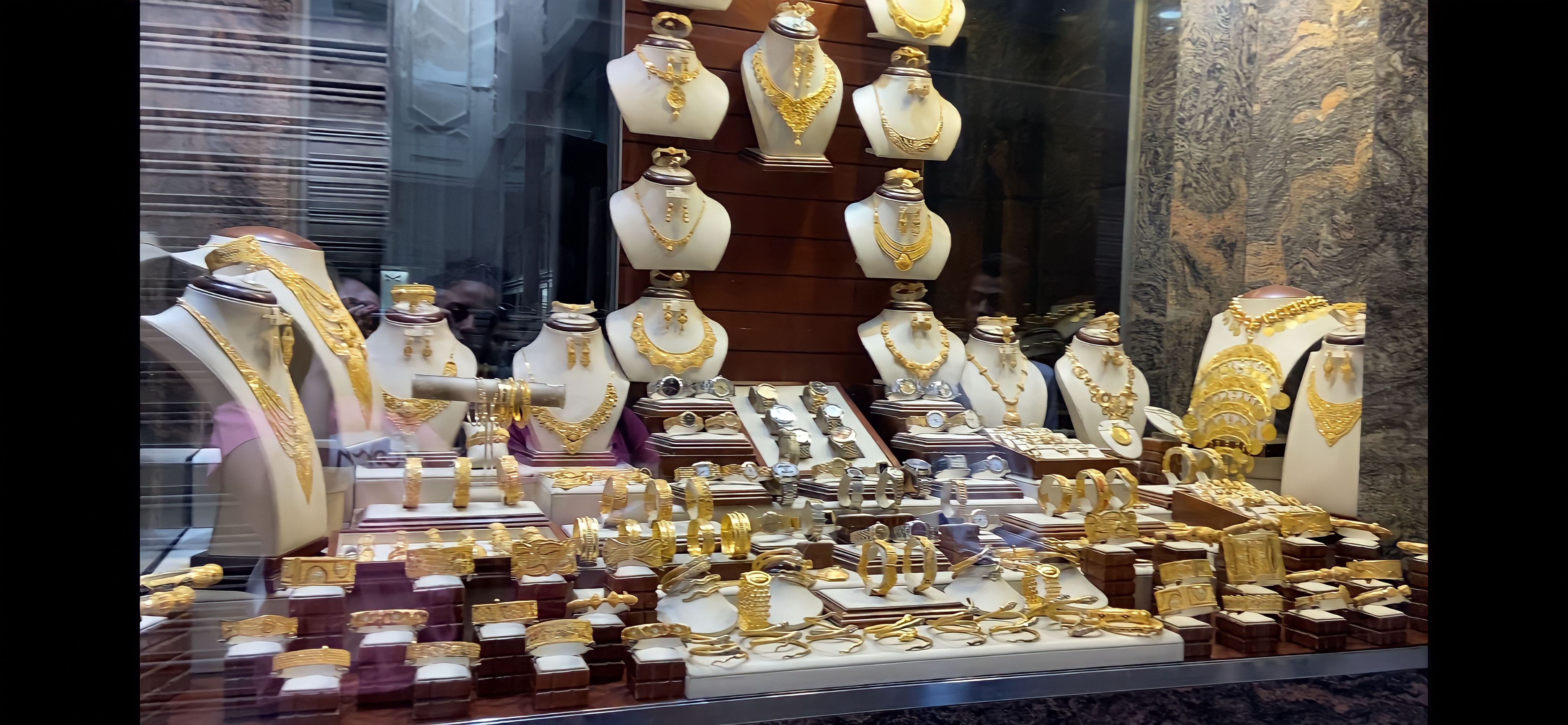
The First step is called
“The Foundry”
Through this step, they collect all the old jewels that have been sold to the gold stores and then put all those jewels in a machine called "Wegaa." In this machine, they place a tool shaped like a large cup called "Botaa," which is made of lead and is designed to keep the gold from sticking to it; this tool and machine are in charge of melting the gold. They first put a chemical mix of carbonate and dengar called "Moona," which helps gold melt easily and rapidly. The old jewelry is then placed in this machine.
Then the gold will become liquid after a short period of time, just around 4 to 5 minutes. After that, they mix it together with a tool called "Meswat" to mix all the gold karats, and then they put this liquid mix of gold in cubes to make the shape of a gold bar.
Then they clean it and put it in a nitric acid solution to clean it from any impurities and oils. And now the old gold jewelry has become a gold bar.
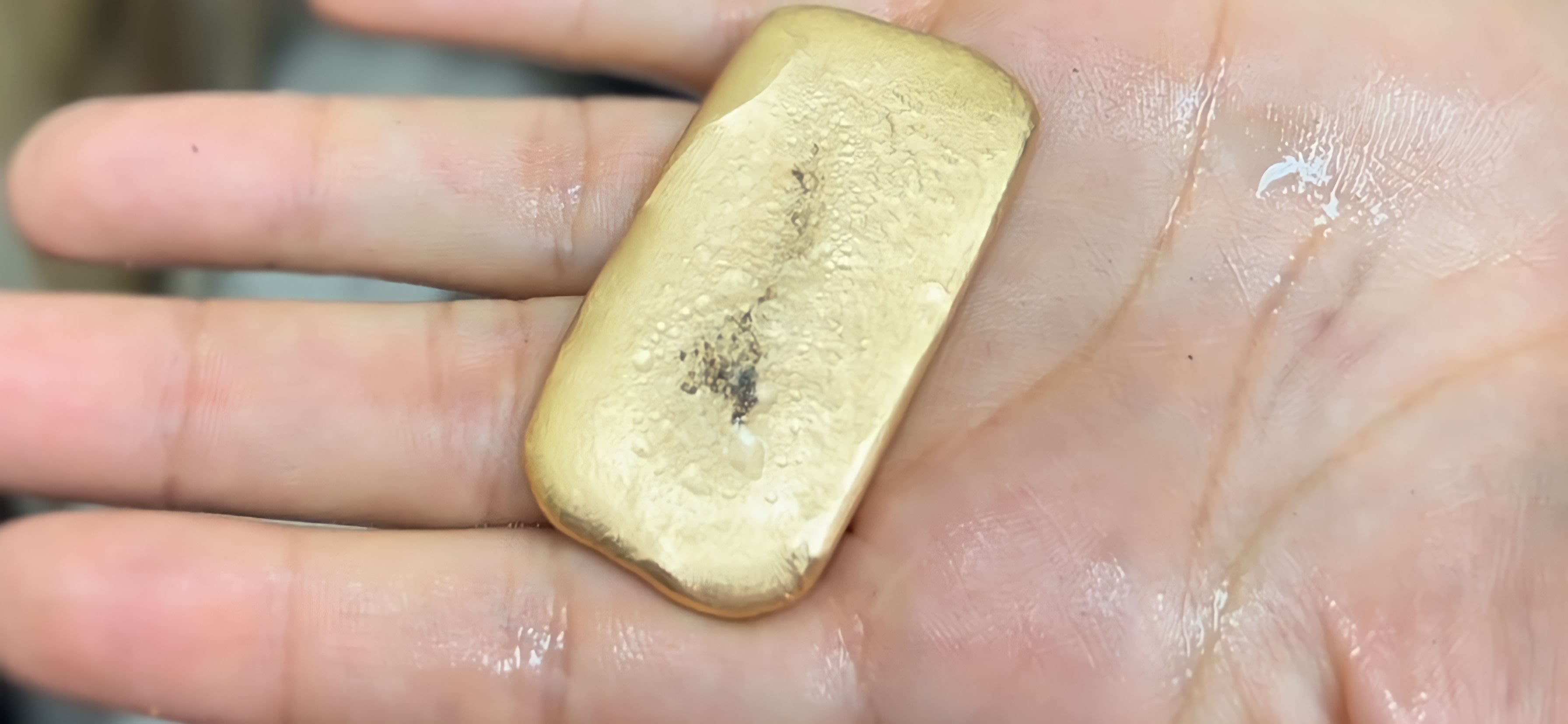
The Second step is called
"Chechen"
First, it is to define the karats of the gold bar that they make 4 marks in the bar in the 4 corners, then put it in a machine that contains a lens with X-rays four times, one for every mark.
This machine took 8 minutes for every mark to detect numbers. Then they make an average from those numbers to know the actual karat of the gold bar, if it is 18 or 21.
After that, they put the average number of every bar on it to decide whether to buy it as a bar or make another piece of jewelry from it.

The Third step is called
"The Grinding."
In this step, there is a machine that contains two metal cylinders that press the bar and transform it from 2,5 cm in thickness to a tape that they choose according to its thickness what they will make from it.

The Fourth step is
"Laser cutting"
Before this step, they should choose the design and the dimensions that they need in the design then, put it in the laser machine to make it draw and cut the design from the gold tape.
"Sometimes we make 3D models, which have a length, height, and width."
The Fifth step is
"Separate the design from the tape"
In the previous step, the laser machine cut the design from the gold tape but it still stitched on it, and then they set the joints in the design to make it ready for the next step. And those joints differ from a design to depends on the customers' needs.
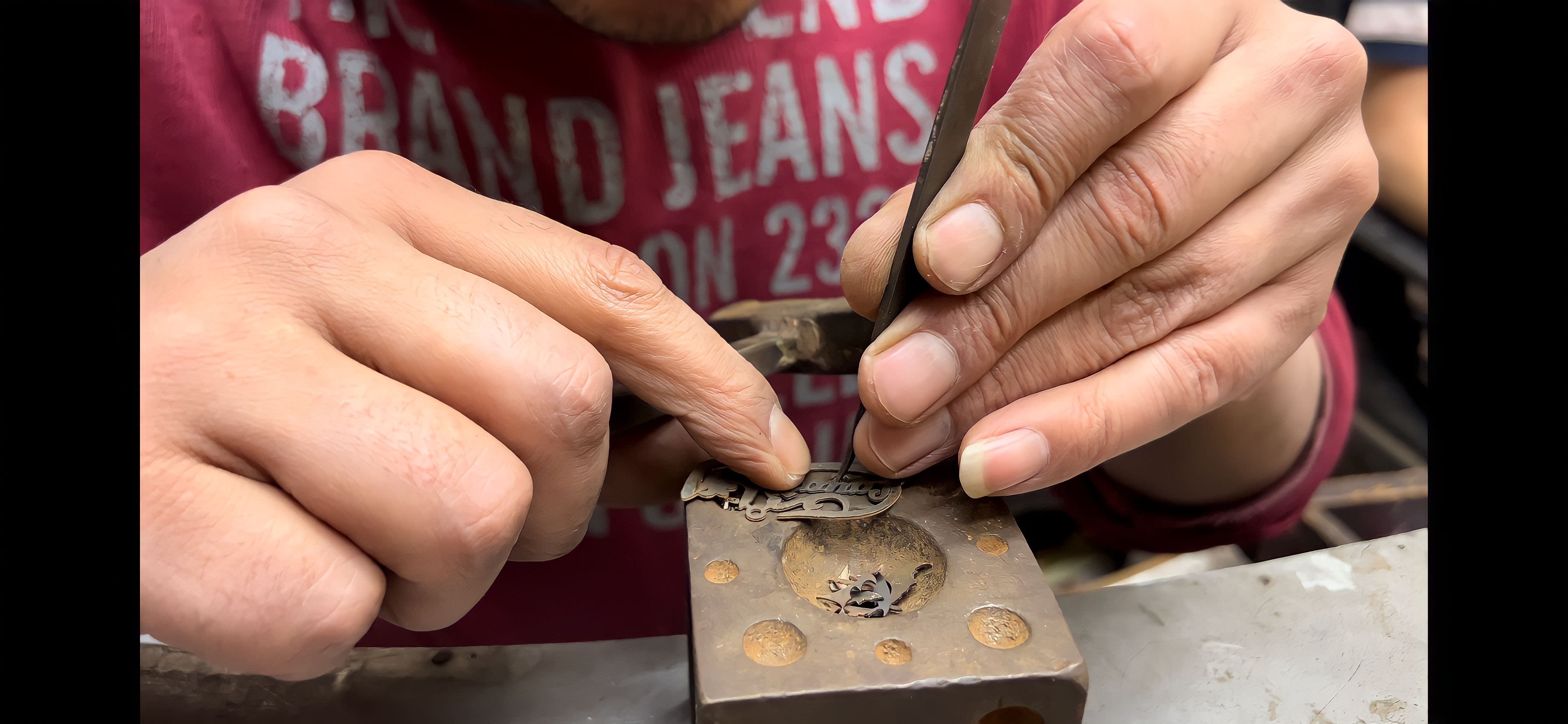
The Sixth step is
"Buffing"
The first brush is for sanding; it removes the first layer of gold because the first layer of gold became scratched in all the previous steps.
The second brush is sharp to complete what the previous brush did to make the design clearer.
"The one using this brush should be careful to balance the weight of the piece."
The third brush is soft.
After that, they put it in a machine called "ultrasonic," which is a vibration machine that cleans the piece from all the impurities and makes it shiny and glow.
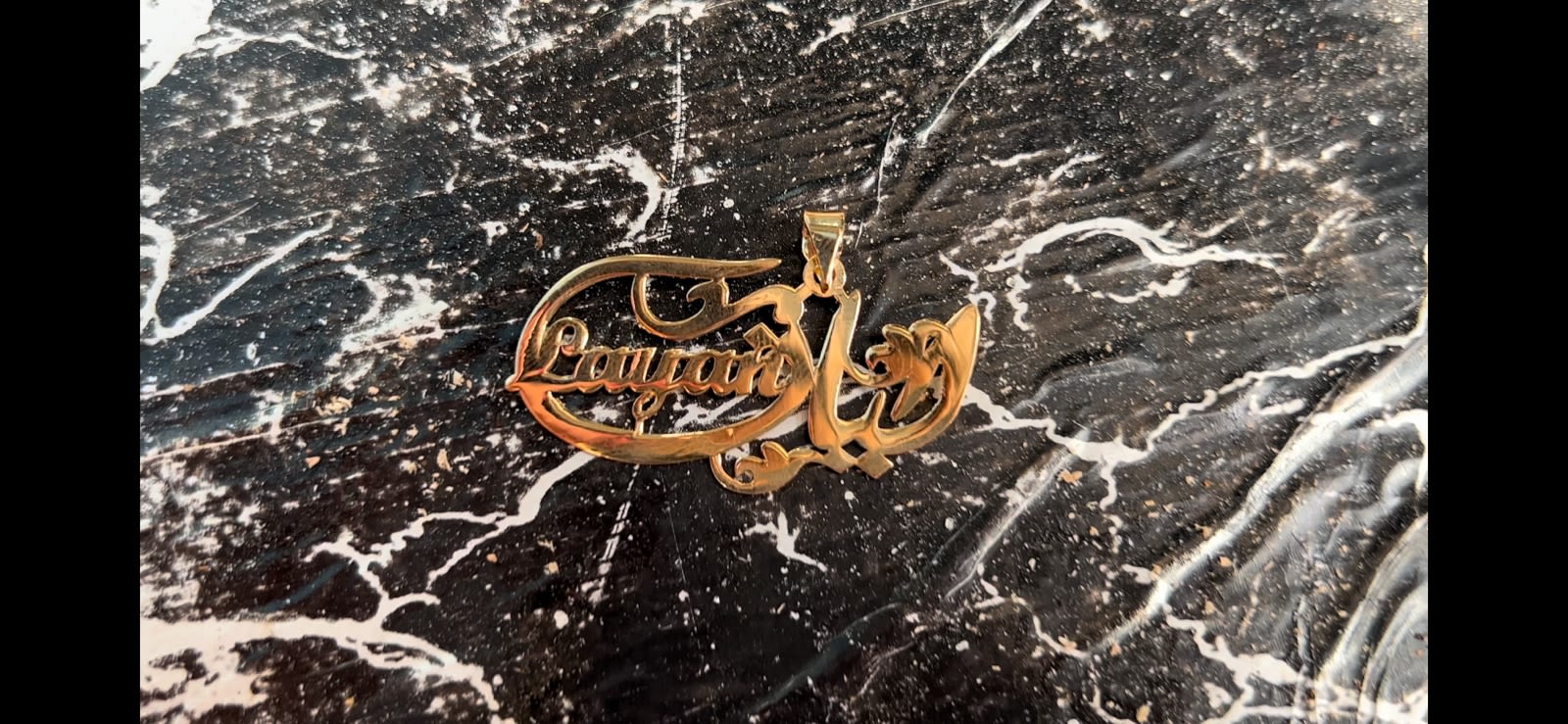
The Final and Seventh step is "Finishing"
They return the piece to the laser machine because some clients want the piece to be matte only from the inside or only from the outside, so the laser removes a shiny layer from the gold to transform the layer into matt in order to make a good color grade in the piece.
Finally, after all of those steps, the old jewelry is transformed into a new one in minutes and only goes through seven steps to become a new shiny piece of jewelry that you can purchase in stores.

A Historical background
the first human interaction with gold occurred in ancient Egypt around 3,000 B.C. The gold played an important role in ancient Egyptian mythology and was prized by pharaohs and temple priests.
For example, each queen had a pair of gold sandals made of hammered gold sheet with scored decoration on the insole and cosmetic vessels made from an assortment of stones and other materials fitted with gold sheet.
The early Egyptian kings filled their tombs with gold treasures. This was first evident when archaeologist Howard Carter discovered the tomb of Tutankhamun in 1922.It is said that the mining activities involving the separation of the metal from the rocks and boulders were usually done by prisoners and convicts. Gold mining was primarily done in the eastern desert and Nubia.
Gold jewelry intended for daily life or use in temple or funerary ritual continued to be produced throughout Egypt’s long history.
The Egyptians produced the first known currency exchange ratio, which mandated the correct ratio of gold to silver: one piece of gold is equal to two and a half parts of silver. This is also the first recorded measurement of the lower value of silver in comparison to gold.
Although yellow gold remains the most popular color, gold is now available in a wide range of colors

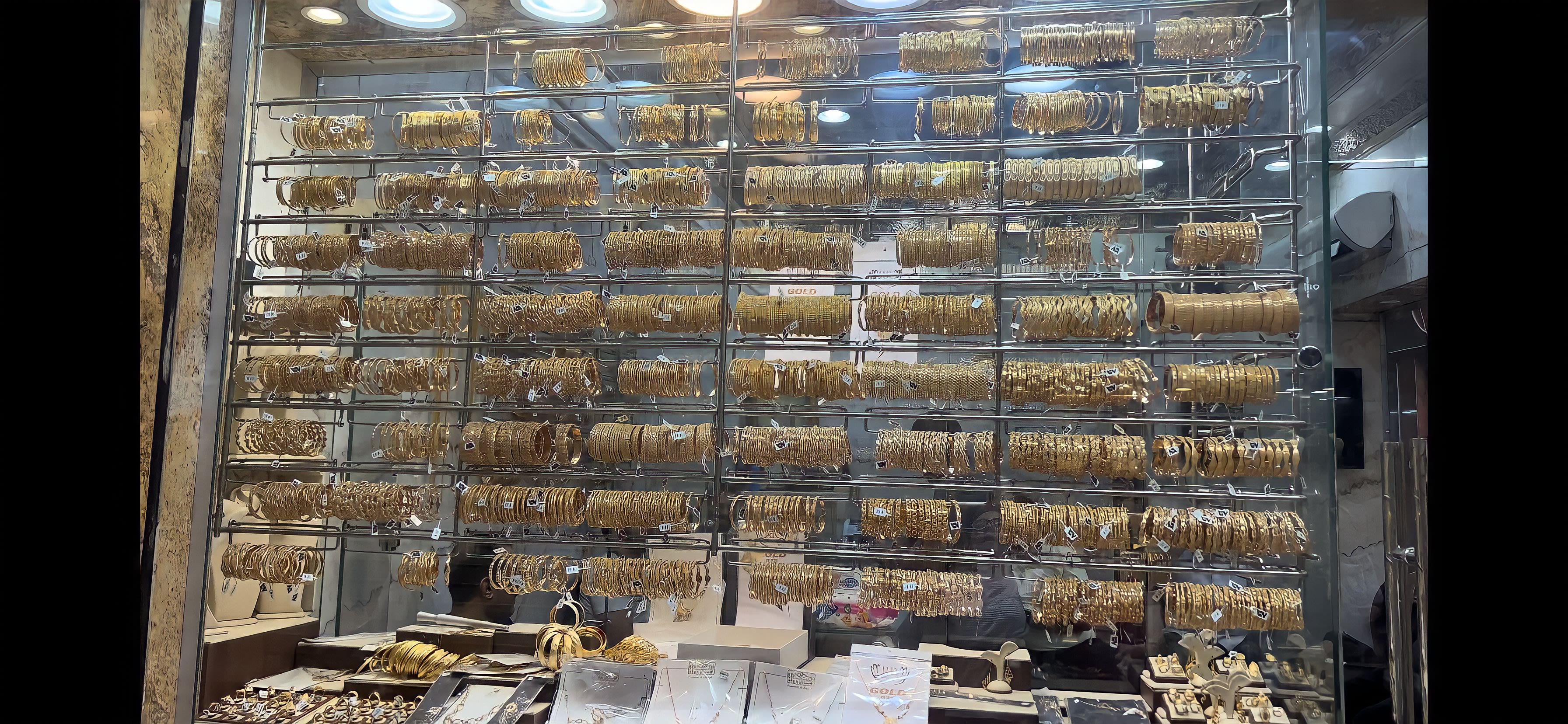
Our Team
Menna-Allah Amr Mohamed 20060774... Shorthand Designer and Editor.
Karen victor Farouk 20060595... Report the 7 steps, interview the source, shoot some of the material and the videos.
Farah Alaa Saleh Mohamed Helmi 20060572... Report the historical context.
Nour Essam said Mohamed Eleraky 20060880... Shooting some of the materials and the videos.
Mostafa Sameh Fathy 20060738... Video editor.
Malak Abdelsalam Ali 20060747... Photo editor.
Nada Ahmed Mohamed samy Elgohary 20060844... Finds the hyperlinks, Video Editor
Mayar Mohamed Mohamed Eid 20060812... Photo Editor
Farah Yasser Mohamed 20060579... Report some of the information, Language Editor.
Yara Mohamed Said 20060989... Gathered information.
